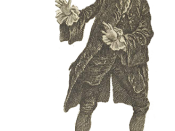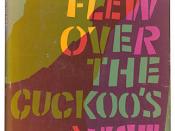It is suggested that in modern literature, the true element of tragedy is not captured because the protagonist is often of the same social status as the audience, and therefor, his downfall is not tragic. This opinion, I find, takes little consideration of the times in which we live. Indeed, most modern plays and literature are not about monarchs and the main character is often equal to the common person; this, however, does not mean the plot is any less miserable nor the outcome any less wretched. The first work I have chosen proves this fact. One Flew Over the Cuckoo's Nest, a first novel by Ken Kesey published in 1962, is a contemporary tragedy describing the downfall of a rigidly administered ward in a mental institution led by the rebellion of a new admission. The work I have chosen to compare this novel to is the classic play by William Shakespeare, Hamlet.
There is an intimate relationship between these to works beyond that they are both tragedies; the protagonist in each lacks conventional hero qualities. Both Hamlet and R.P. McMurphy in One Flew Over the Cuckoo's Nest, can be defined as anti-heroes making these two pieces comparable for study.
To examine the aspect of anti-heroes in tragedy, and how this relates to the characters of R.P.McMurphy and Hamlet, an analysis of the motivation of each is necessary. Motivation is the source of all action, and only in this area these two characters similar to a traditional protagonist. As the character himself evolves through the course of the plot, so do their motives. Hamlet and McMurphy begin at different points with different purposes, but soon meet with a common incentive. For Hamlet, this initial impulse is derived from his embitterment towards his mother for remarrying so soon after...


